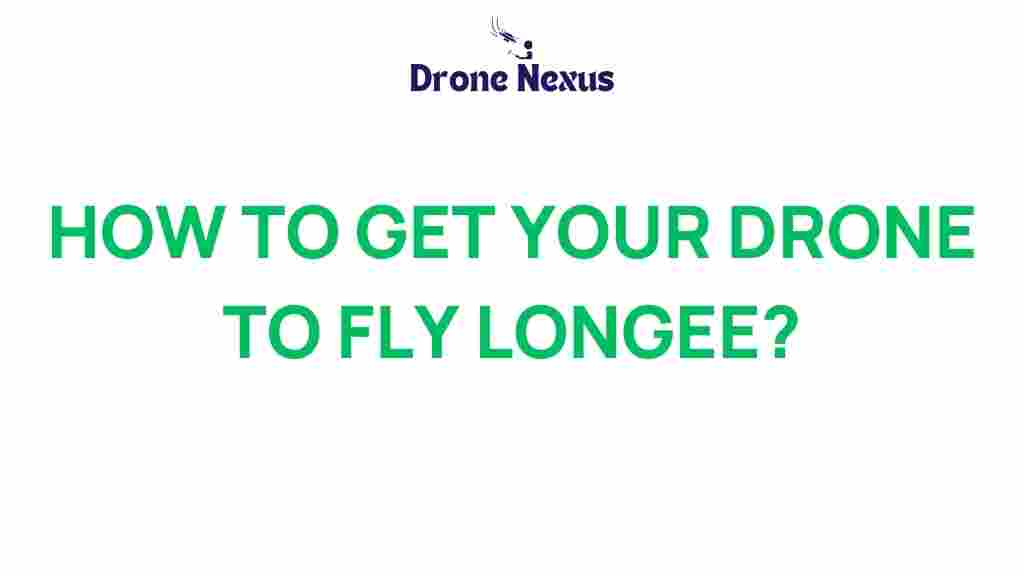Unlocking the Secrets: How to Get Your Drone to Fly Longer – Understanding Drone Performance
When it comes to drone flying, one of the most critical elements for enthusiasts and professionals alike is drone performance. Whether you’re capturing stunning aerial photography, surveying land, or simply enjoying the thrill of flying, maximizing your drone’s flight time can significantly enhance your experience. In this article, we will explore effective strategies to improve your drone’s performance and extend its flight duration. From understanding battery management to optimizing your flight conditions, we will cover all the essential tips you need to know.
Understanding Drone Performance
Before diving into the tips, it’s essential to understand what affects drone performance. Several factors contribute to how long your drone can stay airborne:
- Battery Capacity: The capacity of your drone’s battery is crucial. Higher capacity batteries generally provide longer flight times.
- Weight: Every additional gram can reduce flight time. Minimizing unnecessary weight can improve performance.
- Flight Conditions: Wind speeds, temperature, and altitude all influence how long your drone can fly.
- Flight Techniques: How you fly your drone can also affect its performance. Smooth, controlled movements tend to conserve battery life.
Step-by-Step Process to Extend Your Drone’s Flight Time
Now that we understand the factors affecting drone performance, let’s explore a step-by-step guide to help you fly longer:
1. Choose the Right Battery
The battery is the heart of your drone’s performance. A higher mAh (milliamp hours) rating means more capacity and longer flight times. When selecting a battery, consider:
- Compatibility with your drone model
- Higher mAh ratings for more flight time
- Quality brands that offer reliable batteries
2. Optimize Weight Distribution
Keeping your drone lightweight and well-balanced can significantly enhance its performance. Consider these tips:
- Remove any unnecessary accessories before flight.
- Use lightweight materials for any additional attachments.
- Ensure even weight distribution to avoid excessive strain on motors.
3. Adjust Your Flight Style
Your flying habits can greatly impact battery consumption. Here are some techniques to conserve energy:
- Fly at a steady altitude rather than constantly ascending or descending.
- Avoid sudden maneuvers; gentle turns and slow accelerations help save battery.
- Utilize hover mode when taking pictures to maintain stability without excessive power usage.
4. Monitor Environmental Conditions
Weather conditions play a significant role in drone performance. Pay attention to:
- Wind: Wind resistance can drain your battery quickly. Try to fly on calm days.
- Temperature: Extremely cold or hot conditions can affect battery performance. Aim for moderate temperatures.
- Altitude: Flying at high altitudes may require more power, impacting flight time.
5. Regular Maintenance
Proper maintenance ensures your drone operates at peak efficiency. Here’s how to keep your drone in top shape:
- Regularly clean the propellers to ensure they turn freely.
- Check for firmware updates that can optimize flight performance.
- Inspect and replace damaged parts promptly.
6. Utilize Flight Modes
Most drones come with multiple flight modes. Utilizing the right mode can help conserve battery:
- GPS Mode: Ideal for stable flights; it helps maintain altitude and position.
- Sport Mode: While faster, it consumes more battery; use it sparingly.
- Manual Mode: Allows for precision flying but requires more skill and can drain the battery faster.
Troubleshooting Tips for Common Issues
Sometimes, despite all your efforts, you might still face challenges with drone performance. Here are some common issues and how to address them:
1. Short Flight Times
If you notice that your drone is not flying as long as it used to, consider the following:
- Check the battery’s health and age; older batteries lose capacity.
- Look for any added weight that may have accumulated over time.
- Ensure propellers are clean and functioning properly.
2. Unstable Flights
Instability can lead to higher battery consumption. To troubleshoot:
- Calibrate your drone before each flight.
- Inspect for any physical damage or misalignment in the propellers.
- Ensure firmware is updated for better stability.
3. Loss of Signal or Control
If your drone frequently loses connection, check the following:
- Ensure there are no obstructions between the transmitter and the drone.
- Test the transmitter and receiver to confirm they are functioning correctly.
- Consider upgrading to a more robust transmitter if problems persist.
Conclusion
Enhancing your drone’s performance and maximizing its flight time is achievable with the right knowledge and practices. By focusing on battery management, weight optimization, and proper flying techniques, you can enjoy longer, more satisfying flights. Remember to **regularly maintain** your drone and stay aware of environmental conditions to ensure optimal performance.
For more tips on drone usage, visit our drone resource page. If you’re interested in advanced drone technology, check out this external link for the latest innovations.
By implementing these strategies, you’ll be well on your way to unlocking the secrets of longer flight times and improved drone performance. Happy flying!
This article is in the category Applications and created by DroneNexus Team
